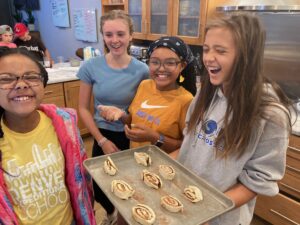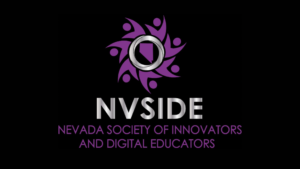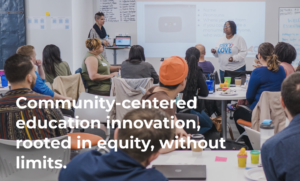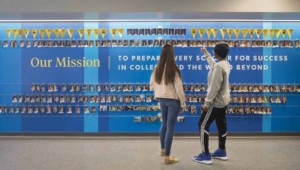Building a Collaborative Culture: From Inspiration to Application

By: Mary Ryerse and Bob Rosenfeld
A middle school teacher from Austin had a chance to visit an elementary level classroom in a peer district and was inspired by how he saw kids working together. While the approach will take some modification to translate to middle school, and the process might be a little messy, this teacher has now set establishing a collaborative culture in his classroom as a top goal.
Through an initiative referred to as “How I Know,” sixty pilot teachers from Dallas ISD, Austin ISD and Tulsa Public Schools are focused on identifying, scaling, and sharing successful approaches for designing formative assessment practice in the classroom. How I Know is part of a grant provided by the Michael & Susan Dell Foundation.
One exciting piece is that this interest in and focus on a collaborative culture has also been observed by the coaches who work with the How I Know initiative. The improvement in collaborative culture was also observed by Bob Rosenfeld of WestEd (school coach and co-author on this post) and validated through his observation data shared later in this post.

A Growth in Collaborative Culture
There was a decidedly different feeling in the classrooms I was visiting a few weeks ago in Austin ISD. At first, I couldn’t exactly put my finger on it, but then I realized that in classroom after classroom students were not seated in traditional rows of desks. Instead, I saw desks pushed together to form pairs or pods, or students sitting at larger rectangular or round tables. Of more importance, the students were not simply sitting next to each other, but, to varying degrees, they were conversing with each other, sharing ideas, and collaborating. Even in the one classroom I observed in which students were still in traditional rows, they were collaborating with their peers electronically through an online math application called Desmos.
This was my fourth trip to Austin visiting classrooms as part of the How I Know initiative. At this same time last year, the first year of the project, most teachers were focused on the initial stages of formative assessment – establishing clear learning goals and success criteria.
Thinking back to my first three visits, the change in classroom practice toward a more collaborative culture was not sudden (see the observation data below), but during this visit it had crossed a threshold and had gone from being incidental to being central to the learning experience in many classrooms.
The tables below show growth over a year’s time in the FARROP – a rubric outlining ten dimensions of formative assessment practice with guidelines and resources for use in observations and reflections – category of “Collaborative Culture.” (FARROP stands for Formative Assessment Rubrics, Reflection and Observation Tools to Support Professional Reflection and is a resource used by the How I Know project.) It is clear by quick glance that the majority of teachers have shifted from beginning level to a majority at developing and progressing levels of mastery.

The Power of a Field Trip
Other efforts in the district, especially those focused on social-emotional learning (SEL), certainly may have had an influence on this shift in classroom culture, but I also came to learn that a “field trip” taken by Austin teachers participating in the How I Know project (see The Power of Teacher-to-Teacher Observations: A Formative Assessment Field Trip) had had a strong impact. On that trip to Summit View Elementary School in Sunnyside, Tucson, teachers were able to experience first-hand what they had read about in the FARROP.
A classroom culture in which teachers and students are partners in learning should be established. According to research referenced in the FARROP publication, findings suggest that classrooms that promote thinking and learning, student autonomy, and students as learning resources for one another are more successful in encouraging lifelong learners.
During a pre-conference meeting, one middle school English Language Arts teacher told me that reading about a collaborative culture on a rubric was one thing, but seeing it first hand in Tucson – even though it was in an elementary school classroom – inspired him to return to his room full of high-energy 7th graders and channel that energy to engage his students actively in learning through dialogue, discussions, and collaborative work. I was delighted to see this inspiration in action when I observed his students the next class period. Not only were students actively engaged at their tables in dialogue and helping each other think through a complex problem, but as students at one table completed the problem, they spontaneously volunteered to help other groups who were struggling. Instead of being told to sit quietly at their seats when done, like in many traditional classrooms, the students were encouraged to act on their natural desire to help their peers. Lively discussions ensued and soon all groups were eager to share out their thinking to the whole class. I was seeing a collaborative culture form right before my eyes.
In the same middle school, in a special education, self-contained classroom where one would often see students engaged in individual packet work, students chose partners and were helping each other think through math problems involving ordering numbers on a number line. The teacher and her aide acted as facilitator of the conversations, being careful not to give away answers but instead ask open-ended question of the students to help guide them collaboratively to a solution.
Clearly, the desire to create collaborative classroom cultures has taken hold in Austin among the How I Know participants. Knowing the respect that project participants have among their peers, if on my next visit to Austin I were to peek into the classrooms of teachers outside the project, I wouldn’t be surprised to see and hear the buzz of collaboration working its magic.
Tips for Creating a Collaborative Culture
Here are several ideas for teachers who want to create a collaborative culture in their classrooms:
- Promote responsibility. Act as a facilitator to allow students to take responsibility for their own learning.
- Appreciate multiple viewpoints. Provide ample opportunities and time for students to come to appreciate and value multiple viewpoints.
- Encourage questions. Discuss in an open class forum what makes students feel safe or unsafe to ask questions or admit confusion.
- Normalize confusion. Establish a classroom norm that confusion is the perfect starting place for learning. For example:
- Allow students to talk about what they don’t understand and “make it cool to be confused.”
- If you give credit for classroom participation, include credit for sharing confusion and questions, not just answers.
- Scaffold discourse. Encourage students to build on the ideas of others and evaluate information presented by connecting, adding evidence, or providing a counter-example. Scaffold this student-to-student discourse through sentence stems, such as:
- “I agree with your idea that…it reminds me of…”
- “I like your idea that…Do you think that supports….?”
- “I have a different idea. To me, the evidence on page xx means…”
- “Do you think that there is any connection between…and…?”
- Focus on others. Design classroom learning experiences that help build an outward mindset by asking students to see and empathize with other students’ needs, objectives, or challenges.
- Update lesson plans. Tweak or “tune” an existing lesson plan by replacing traditional structures with collaborative ones. For example, instead of beginning a class discussion about a text by calling on individual students to answer questions about what they just read, instead you could ask them to,
- Begin the discussion by having students work with partners,
- Ask students to share any confusion or questions they have with a partner, and
- Share out with the whole class.
- Advocate for collaboration. Be very direct about your desire to create a collaborative culture and provide opportunities designed to allow students to reflect on and share their thoughts, feelings, and ideas around the collaborative culture in their classroom or school.
Creating a collaborative culture takes time and remains a continual process. Over time, observation of the How I Know project has shown that classrooms involved in the initiative are indeed progressing through the expected stages of growth. And if an observer looks closely, he or she can identify signs of the various dimensions of formative assessment at play.
For more, see:
- The Power of Teacher-to-Teacher Observations: A Formative Assessment Field Trip
- How I Know: Impacting the Classroom through Student-Driven Learning in Dallas
- The Research Base for Formative Assessment
Bob Rosenfeld serves as a Senior Engagement Manager at WestEd’s Comprehensive School Assistance Program.
This post is a part of a series focused on the “How I Know: Designing Meaningful Formative Assessment” initiative sponsored by the Michael & Susan Dell Foundation. See the How I Know website (www.formativeassessmentpractice.org) and join the conversation on Twitter using #HowIKnow or #FormativeAssessment
Stay in-the-know with all things edtech and innovations in learning by signing up to receive the weekly Smart Update. This post includes mentions of a Getting Smart partner. For a full list of partners, affiliate organizations and all other disclosures, please see our Partner page.







0 Comments
Leave a Comment
Your email address will not be published. All fields are required.